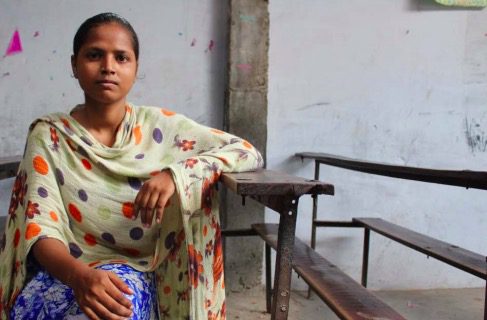
What Works: Lessons Learned in Survivor Inclusion
This policy paper examines the inclusion of modern slavery survivors in program design, implementation, and evaluation of anti-slavery and counter-trafficking programs. Survivor inclusion is crucial to developing and implementing interventions that reflect survivor needs and ensuring program evaluations reflect measures of success determined by survivors.
This analysis is drawn from a subset of evaluations (n=10) contained in the Promising Practices Database which included some component of survivor inclusion, and identifies common trends and lessons learned so future program funders, designers, and evaluators can better empower survivor leaders and strengthen the quality of both interventions and evaluations in the evidence base.
An Expert Perspective
“Engagement is not only pegged on survivors constantly narrating their lived experiences, but also tapping into their different talents and strengths.”
Survivor inclusion in developing and implementing policies and programmes is essential as it allows for the creation of projects that work for survivors and are in line with their needs. This is important as it not only helps in honing the expertise survivors have through their lived experience, but also in promoting their recovery and reinforcing their agency and self-determination. It is vital to recognise that inclusion is not only pegged on survivors constantly narrating their lived experiences, but also tapping into their different talents and strengths, helping them in building a sense of identity, and creating spaces where they can thrive.
Survivor inclusion allows for the improvement of policies and programmes, both long-term and short-term, whilst creating an essential avenue to ensure survivors gain agency. However, for survivors to be meaningfully engaged in the field, it is crucial to recognise that different survivors have diverse capabilities, and should not be approached as a collective, but treated as individuals. This can help reduce the risk of re-traumatisation and creation of intimidating spaces that survivors cannot thrive in.
Lack of survivor inclusion has often led to creation of policies and programmes that are out of touch with the needs of survivors. This is often because survivors have, for the longest time, been viewed only as beneficiaries of programmes, and hence haven’t been included in the conversation. It is important to recognise that the needs of survivors vary depending on factors such as gender, age, sexuality, and even region, thus using a ‘one shoe fits all’ approach when creating solutions may mean that some survivors will not benefit from these. It also means that the existing gaps that the policy or programme was supposed to fill will still be there, resulting in survivors’ continuous exposure to social or economic shocks, which may consequently expose them to the risk of re-trafficking.
It is therefore essential to eradicate barriers that are a potential hindrance to survivors being included. For instance, when setting out the qualification criteria for a job or project, it is important to consider criteria that are survivor-friendly, and not set the qualifications too high, thereby locking survivors out. Perhaps having a different set of qualification requirements for survivors and experts might suffice. This can also be achieved through creating structures that advocate for survivor-friendly indicators to measure success in these spaces.
Having a people-centric culture where survivors are actively involved in conversations and are able to give input on how they can be supported to thrive in the space is essential. It is therefore important for those working with survivors to recognise when they need to step back and allow survivors step up. This requires creating collaborative spaces and offering the support needed for them to step up. Analysing and putting in mitigative measures on organisational cultures that may be biased against survivors is also key. This can be achieved through being reflexive with our biases and reflecting on how they can potentially hinder meaningful survivor inclusion, and putting in the necessary measures that can curb the same.
Having safeguarding measures in place is also essential in preventing harm whilst ensuring that survivors can thrive in these spaces and the engagements that they are involved in. This entails ensuring clearly laid out guidelines that promote wellbeing and prevent abuse. It is important to have clearly defined roles and terms of engagement to curb the risk of re-exploitation. Through employing a trauma-informed approach and proactively working towards creating an environment where survivors can thrive, we are not only ensuring that they are able to thrive in the spaces where they are engaged, but that they are also being empowered.
Creating a culture that promotes continuous development for survivors, thereby allowing them to re-invent themselves and elevate their skills, can be achieved through offering cross-trainings that enable them to learn different skills that are relevant in the field. This will go a long way towards helping them build up on the skills that they need to excel, as it helps in building not just their self-esteem but also their potential.
Caroline is a passionate survivor leader who believes in creation of safe spaces where survivors can thrive, be empowered to envision, and create a different life for themselves.
Read full report here.
![]() Walk Free is an international human rights group focussed on the eradication of modern slavery, in all its forms, in our lifetime. Learn more about Walk Free here.
Walk Free is an international human rights group focussed on the eradication of modern slavery, in all its forms, in our lifetime. Learn more about Walk Free here.
